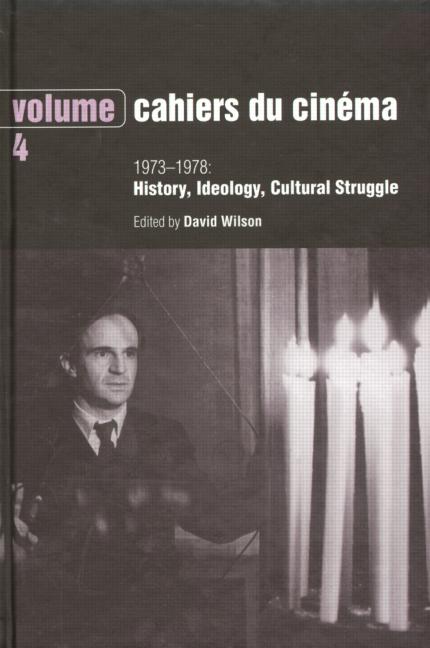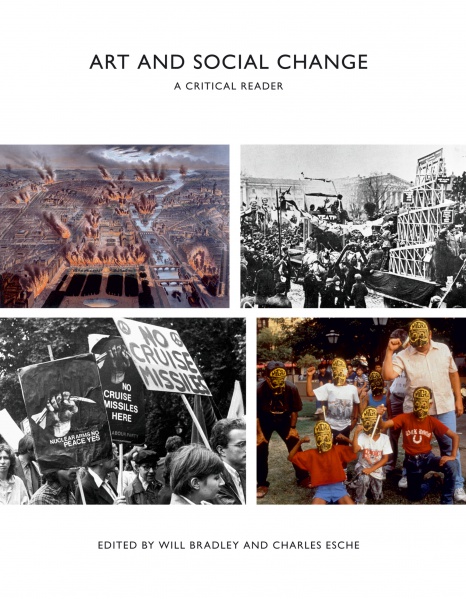Cahiers du Cinéma, vols. 1–4 (1951–78/1985–2000) & Special Issues in English (1966-67)
Filed under book, magazine | Tags: · aesthetics, cinema, film, film criticism, film history, film theory, philosophy of film




Cahiers du Cinéma [Notebooks on Cinema] is an influential French film magazine founded in 1951 by André Bazin, Jacques Doniol-Valcroze and Joseph-Marie Lo Duca. It developed from the earlier magazine Revue du Cinéma involving members of two Paris film clubs—Objectif 49 (Robert Bresson, Jean Cocteau and Alexandre Astruc, among others) and Ciné-Club du Quartier Latin. Initially edited by Éric Rohmer, it included amongst its writers Jacques Rivette, Jean-Luc Godard, Claude Chabrol and François Truffaut. (from Wikipedia)
This set of four volumes presents selected texts from the years 1951-1978 in English translation.
Cahiers du Cinéma: The 1950s: Neo-Realism, Hollywood, New Wave
An anthology from Cahiers du Cinéma, nos 1–102, April 1951 – December 1959
Edited by Jim Hillier
Publisher Harvard University Press, 1985
ISBN 0674090608
312 pages
Cahiers du Cinéma: 1960-1968: New Wave, New Cinema, Reevaluating Hollywood
An anthology from Cahiers du Cinéma, nos 103–207, January 1960 – December 1968
Edited by Jim Hillier
Publisher Harvard University Press, 1986
ISBN 0674090624
363 pages
Cahiers du Cinéma, Volume 3: 1969-1972: The Politics of Representation
An anthology from Cahiers du Cinéma, nos 210–239, March 1969 – June 1972
Edited by Nick Browne
Publisher Routledge, in association with the British Film Institute, 1990
ISBN 0415029872
352 pages
Cahiers du Cinema, Volume 4: 1973-1978: History, Ideology, Cultural Struggle
An anthology from Cahiers du Cinéma, nos 248–292, September 1973 – September 1978
Edited by David Wilson
With an Introduction by Bérénice Reynaud
Publisher Routledge, in association with the British Film Institute, 2000
ISBN 0415029880
323 pages
Publishers: Volume 1, Volume 2, Volume 3, Volume 4.
Volume 1 (1950s)
Volume 2 (1960-1968)
Volume 3 (1969-1972)
Volume 4 (1973-1978)
Cahiers du Cinema in English, ed. Andrew Sarris:
Number 1 (Jan 1966, 74 pp, 57 MB, via chef, added 2015-1-11),
Number 2 (Mar 1966, 82 pp, 65 MB, via chef, added 2015-1-12),
Number 3 (May 1966, 74 pp, 63 MB, via chef, added 2015-1-16),
Number 4 (Jul 1966, 66 pp, 57 MB, via chef, added 2015-1-16),
Number 5 (Sep 1966, 65 pp, 56 MB, via chef, added 2015-1-16),
Number 6 (Dec 1966, 66 pp, 57 MB, via chef, added 2015-1-16),
Number 7 (Jan 1967, 66 pp, 61 MB, via chef, added 2015-1-16),
Number 8 (Feb 1967, 68 pp, 44 MB, via LtJ),
Number 9 (Mar 1967, 65 pp, 59 MB, via chef, added 2015-1-17),
Number 10 (May 1967, 68 pp, 43 MB, via LtJ),
Number 11 (Sep 1967, 68 pp, 43 MB, via LtJ)
Number 12 (Dec 1967, 66 pp, 60 MB, via chef, added 2015-1-18)
See also: Daniel Fairfax: The Red Years of Cahiers du cinéma, 1968-1973 (2021).
Comments (5)Will Bradley, Charles Esche (eds.): Art and Social Change: A Critical Reader (2007)
Filed under book | Tags: · aesthetics, art, art history, art theory, avant-garde, bauhaus, constructivism, dada, politics, revolution, situationists, social movements, subversion, zapatistas

“The desire to change the world has often led artists to align themselves with wider social movements and to break with established institutions of art. This reader gathers together an international selection of artists’ proposals, manifestos, theoretical texts and public declarations that focus on the question of political engagement and the possibility of social change. The approaches represented are many and diverse, from Gustave Courbet’s involvement in the Paris Commune and the socialist art theory of William Morris to the hybrid activist practice associated with the twenty-first century ‘movement of movements’; from the political commitments of the Modernist avant-gardes to the rejections of Modernism in favour of protest, critique, utopian social experiment or revolutionary propaganda. Six specially commissioned essays – by Geeta Kapur, Lucy Lippard, John Milner, Gerald Raunig, Marina Vishmidt and Tirdad Zolghadr – further explore both the historical context and the contemporary situation.”
Publisher Tate Publishing, in association with Afterall, London, 2007
ISBN 9781854376268
479 pages
Commentary: Marco Deseriis and Brian Holmes (Mute).
Comments (3)Tomáš Štraus: Umenie dnes: pokus o kritickú esej (1968) [Slovak]
Filed under book | Tags: · 1960s, abstract art, aesthetics, art, art criticism, art history, art theory, avant-garde, constructivism, intermedia art, modernism, op art, science, suprematism, surrealism, tachisme

A critical review of the arts of the 1960s by the Slovak art theorist and historian Thomas Strauss (1931–2013).
“Je ťažké, ba priam nemožné rozlíšiť, kde končí sféra dejín prekračujúcich prah čerstvej až najčerstvejšej súčasnosti. Nejde tu len o nový, ustavične sa rozmnožujúci a neohraničený materiál, ktorý ešte nestačil vykryštalizovať a primerane spevnieť, aby sa mohol stať predmetom chladnej analytickej vedeckej pozornosti. Ide predovšetkým o stanovisko a metódu. Predkladaná práca sa hlási k dedičstvu — ako sa u nás doposiaľ hnevlivo hovorí — ‘neobjektívnych’ a ‘nehistorických’, to znamená horúcou ihlou bezprostredného zážitku zošívaných prieskumov novej tvorby. Od Herberta Reada po povedzme Jindřicha Chalupeckého (ktorému som navyše zaviazený i za konkrétne pripomienky k rukopisu) je veľký rozptyl autorov, ktorí v posledných desaťročiach uvažujú o umení — dnes. Priznávam sa k tejto tradícii programovo už i vlastným titulom práce.” (from the Foreword)
With Russian and English summaries (pp 159-162 & 163-165)
Publisher Vydavateľstvo politickej literatúry, Bratislava, February 1968
Volume 2 of Monoskop Unlimited Edition series
185 pages
Interview with the author (Daniel Grúň, Kritika & Kontext, 2005, in Slovak)
PDF (70 MB, no OCR)
Comment (1)
